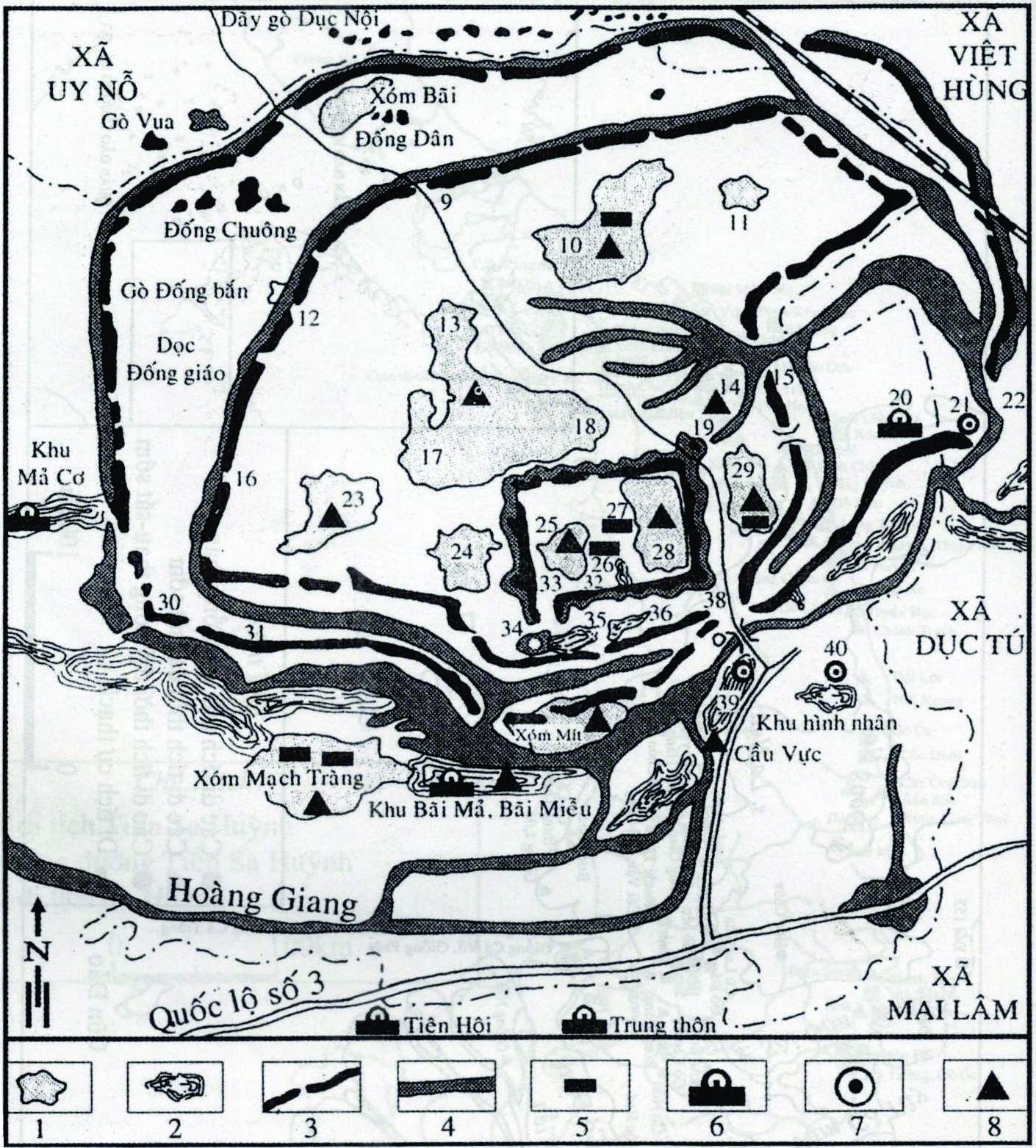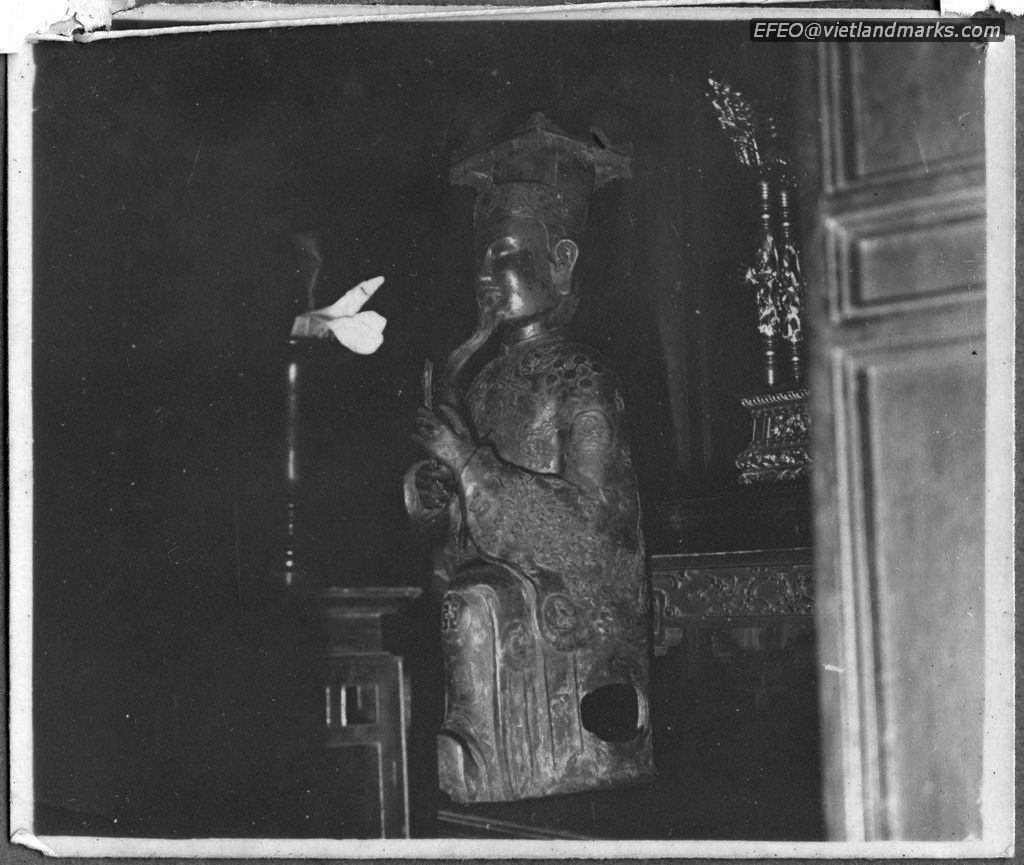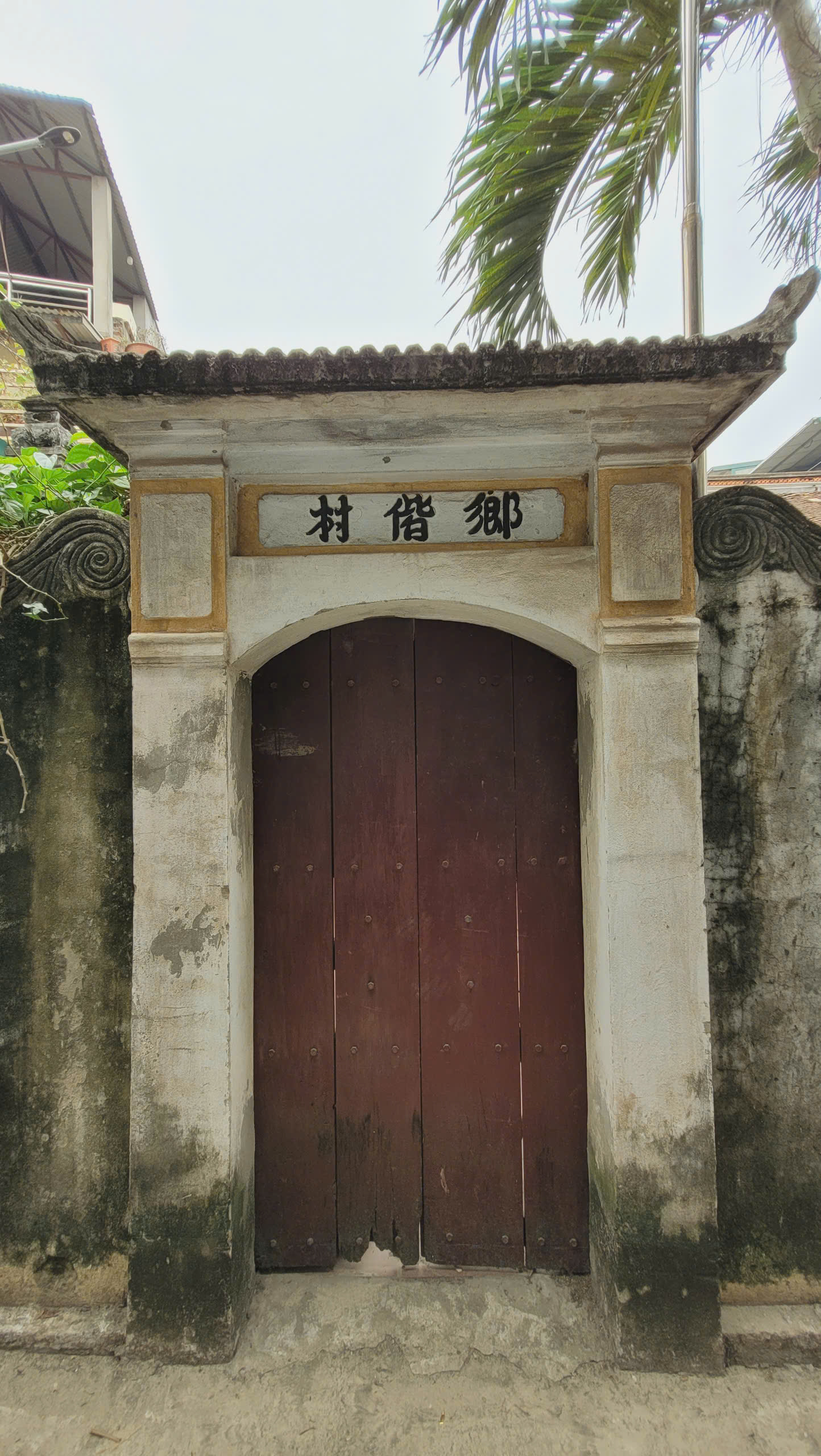
Immediately after the victory, from the Bach Dang seaport (Hai Phong city), Ngo Quyen led a large army to set up the capital in Loa Thanh (Co Loa citadel, Dong Anh district, Hanoi) to show his intention to continue the cause of building and defending the country during the Hung King - An Duong Vuong era, affirming his determination to maintain the newly regained independence of the young nation. He decided to abandon the position of Governor of the Northern feudalism, and proclaimed himself King. The book Dai Viet Su Ky Toan Thu states that "Ky Hoi, year 1 (939), (…). In the spring, the king began to proclaim himself king, established Duong Thi as Queen, appointed hundreds of officials, and established the royal rites and uniforms". He resolutely severed all dependence on foreign countries, and built a government based on the centralized monarchy model, a truly independent kingdom.
The scope of our country under the Ngo Dynasty was recorded by Nguyen Trai in Du Dia Chi: "King Tien Ngo defeated the Han army and restored the country; the land acquired, bordered Liangguang to the north, reached Dia Ly to the south, a total of two thousand eight hundred miles, bordered the seaport in Kham Chau to the east, and bordered Yunnan province to the west, a total of one thousand seven hundred miles." This document allows us to basically visualize the scope of our country at the beginning of its independence period, which was still the Au Lac region more than a thousand years ago. At this time, although national independence had just been regained, it was still very immature. The country and the Ngo Dynasty were still facing countless difficulties and challenges, including the danger of re-invasion from the North and the danger of encroachment from the South that were still threatening every day and every hour.
Setting up the capital in Co Loa, Ngo Quyen wanted to rely on the high citadel and deep moat at the junction of the waterways and roads in the center of the Red River Delta, so that the central court could firmly control the delta and extend its control over the entire national territory. The Co Loa citadel was built by the Au Lac army and people not only as the capital in the center of the country but also as a complete defense base for both infantry and navy with hundreds of mobile warships operating through the Hoang Giang, Cai, Cau, Duong, and Luc Dau rivers... This citadel was used by Trung Vuong at the beginning of the Common Era as a defense line to stop the invading army of Ma Vien, directly protecting the capital of Me Linh. At the beginning of the 6th century, Co Loa citadel was used by Ly Phat Tu as a nerve center of the Van Xuan state in the final stage. On the other hand, throughout the period of Chinese domination, seeing the important position of Co Loa citadel, the occupying governments still chose this as a place to station troops and at many times always paid attention to building up the citadel to be more solid. Perhaps that is why during the Tang Dynasty, the Northerners called Co Loa citadel Con Luan citadel, meaning a majestic, solid citadel, the stronghold of the colonial government.
The Ngo Dynasty lasted 27 years (938 - 965), which was too short a time for the Ngo Dynasty to build the capital, so there were not many traces of Ngo Quyen in Co Loa. Up to now, the Co Loa Special National Relic Site still retains important marks associated with Ngo Vuong Quyen such as:
Ma Tre Relic
The Ma Tre site is a high ground level in the southwest of the South Gate of Co Loa Citadel, close to the left of Co Loa Street from the Sa Market area to An Duong Vuong Temple, between the Central Citadel and the Inner Citadel. In 2010, the Vietnam National Museum of History and the Korean Museum jointly excavated this site, and during the excavation, they discovered a number of important relics dating back to around the 9th-10th centuries. This shows that although it is not clear whether the Ngo Dynasty artifacts appearing at the Ma Tre site are from the Ngo Dynasty, we can assume that the Ma Tre site bears traces of the 10th century culture, including the Ngo Quyen period.
Thuong Temple
The Thuong Temple is also known as Co Loa Temple or An Duong Vuong Temple. Legend has it that this was the palace of King An Duong Vuong (3rd - 2nd century BC) and Ngo Quyen in the 10th century. In the temple, there is a pair of parallel sentences about Ngo Quyen:
Transliteration:
Thuc Quoc Son Ha Nguyen Co Viet
Loa Thanh Cung Tam Tu Tien Ngo
Translation:
Viet Nam Son Song Nguyen Co Viet
Loa Thanh Cung Tam Tu Tien Ngo
Signature: Bao Dai Nham Ngo Dong (Winter of Nham Ngo year 1943) presented by the village's 9th grade Van Giai Sung Thu Chi Nguyen Tuan, Ly Truong Hoang Canh, Pho Ly Nguyen Tiet, Hoang Dong, Truong Khanh, Truong Co.
Ngu Trieu Di Quy Communal House
Ngu Trieu Di Quy Communal House is also known as Co Loa Communal House. According to ancient legend, the place where the communal house was built was the court palace of An Duong Vuong (3rd - 2nd century BC) and Ngo Quyen in the 10th century.
Ngo Quyen Well
Legend has it that Ngo Quyen had a well dug in front of the South Gate of the Citadel (now at the location of Xom Chua post). It was originally an earthen well, but later the villagers of Co Loa repaired it with bricks and stone walls to get water for drinking.
Ngo Quyen Banyan Tree
According to legend, after Ngo Quyen ascended the throne, he ordered a banyan tree to be planted in front of the shrine of My Chau. The people of “Ke Doc” (now Duc Tu commune) believe that the banyan tree was planted by the people of Duc Tu when the Queen gave birth to the Prince in Co Loa to mark the day the Prince was born.
The event of Ngo Quyen founding the country, proclaiming himself King, and establishing the capital in Co Loa is the synthesis of the thousand-year history of the entire nation fighting against the Chinese domination, a continuation and elevation of the historic final victory at Bach Dang, marking a very long and fundamental step forward in Vietnamese history.
MANAGEMENT DEPARTMENT OF CỔ LOA VESTIGE SITE








